Frieze New York: Art in Cubicles
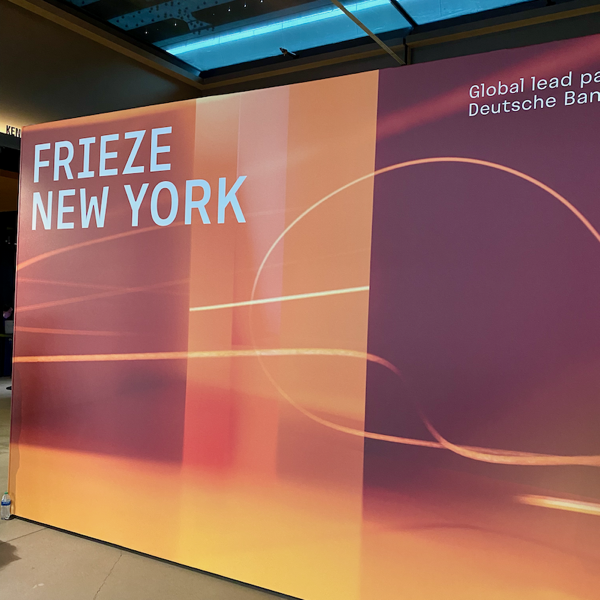
I went to Frieze New York for the first time yesterday with a couple friends. It was the first time I have been to an art fair, and it was an exhausting experience — but not in a bad way. Being with friends was lovely.
Held this year at The Shed, the arts complex located in Manhattan’s Hudson Yards, three floors were dedicated to exhibition space.
At one point, we were on the second floor, where some of the more renowned artists had their work displayed, and we got to peer down into the first floor. I took the following photograph. For me, it was an accidentally representative image of my experience of the art world at Frieze: Artists and people contained within cubicles. Spatially, it was reminiscent of what a corporate office might look like from above.
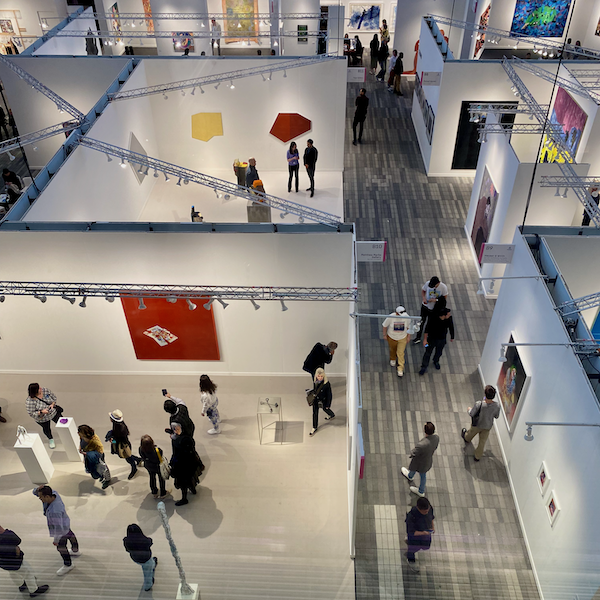
If I didn’t know it was a festival, I would have looked down and thought it was a business convention not an art show. With the corporate sponsors, businesslike design of the Frieze materials, the overall feeling was transactional and impersonal.
I think it has something to do with the decision to give show space to individual galleries and its setting. Also the setting. Despite its outward appearances, The Shed is basically the average convention center, just better designed.
On one hand, I wondered why the gallery owners hadn’t leaned into this convention idea and had made available those fun squeezable stress toys that come in all kinds of custom shapes and are regularly given away to convention goers. I guess that is ultimately what it was: A chance to brand market to the art buyer the individual galleries, since they all attempted to have their own visions (not all the times successfully). But at least some artists were having fun, as in one work (I don’t have a photo) of a dog on a merry-go-round.
Those galleries that hit the right balance between artistic excellence and experience often focused on one or two artists. Take, for instance, the Instituto de Visión (Bogotá and New York). I had been keen to see it. They represent, of course, artists from Colombia, but also from other regions of Latin America.
One of them is Nohemí Pérez (Tibú, Colombia), whose large works of charcoal on embroidered canvas were compellling for their exploration of themes of nature and the relative smallness of humanity in comparison.
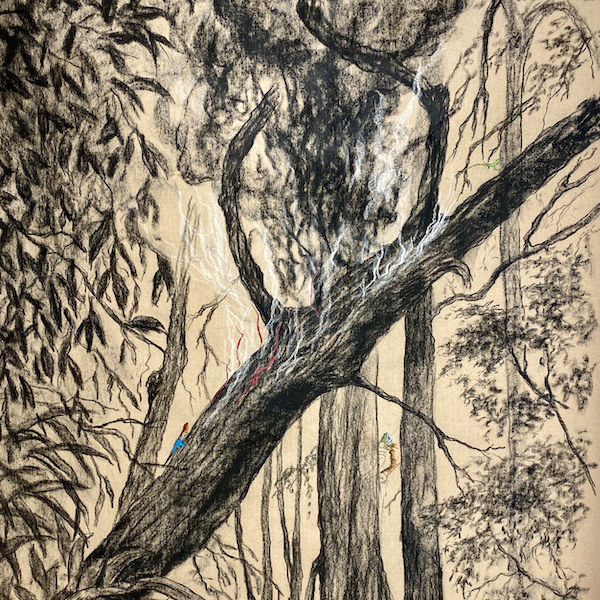
The other works in the space complemented her style — rustic, folkloric, making use of materials such as ceramic and wood to convey modern ideas.
Another gallery that had a cohesive vision was Matthew Brown (Los Angeles, New York) British-born Hayley Tompkins was the focus of their space. She redefines the role of ordinary objects (plastic cutlery, shirts) by painting them with abstract, expressionistic patterns. The focus of the many works on display at Frieze seemed to be the color pink. I enjoyed this work. It reminded me of David Byrne’s big suit.
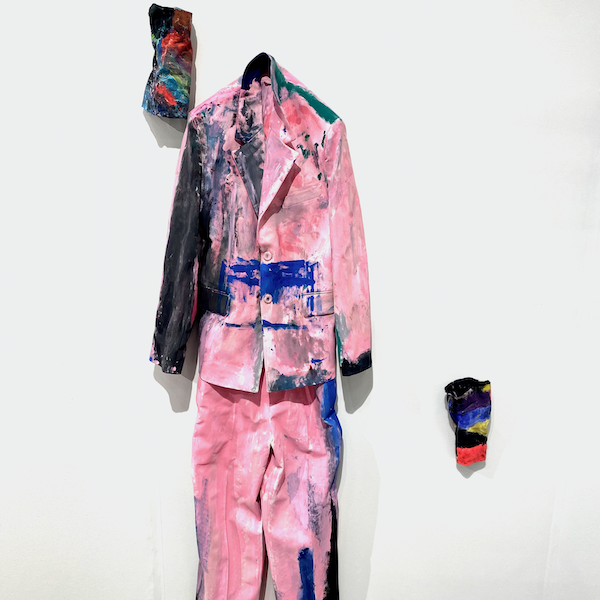
Another one of my favorites was Central Galeria (Sao Paulo, Brasil), which dedicated its entire cubicle to the phenomental work of Carmézia Emiliano. According to one of the gallery workers, Emiliano is an indigenous artist working in Roraima. These paintings reminded me of the works of indigenous artists in Mexico, street artists, who create ellaborate scenes of the environment and people. They are almost anti-modern, but obviously draw on contemporary artmaking techniques. Her skills are noteworthy.
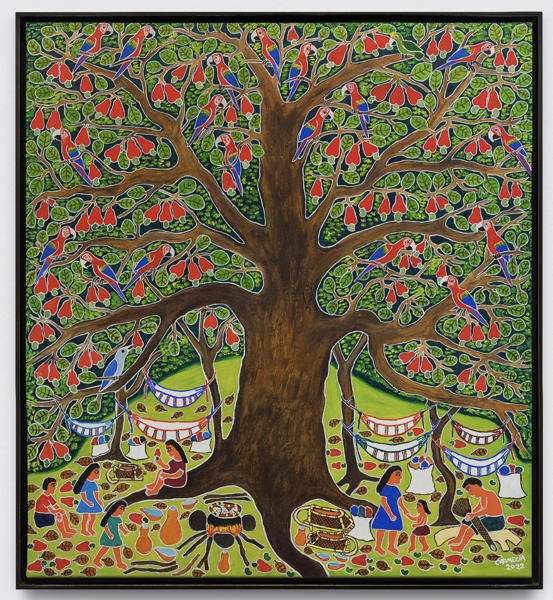
Unfortunately, my experience of most of the fair was one of hunting for hidden treasures amidst the average (even mediocre). I don’t intend to be mean, but some of the works just were not at a level that I would expect from a major art fair. Also, the sheer amount of work was a weakness, but the Frieze design almost compelled volume over curation.
I left with the disorienting sense that I sometimes have while flicking through videos on YouTube or songs on Spotify. In that sense, Frieze is an algorithm for the art industry.
Sunday May 5, 2024